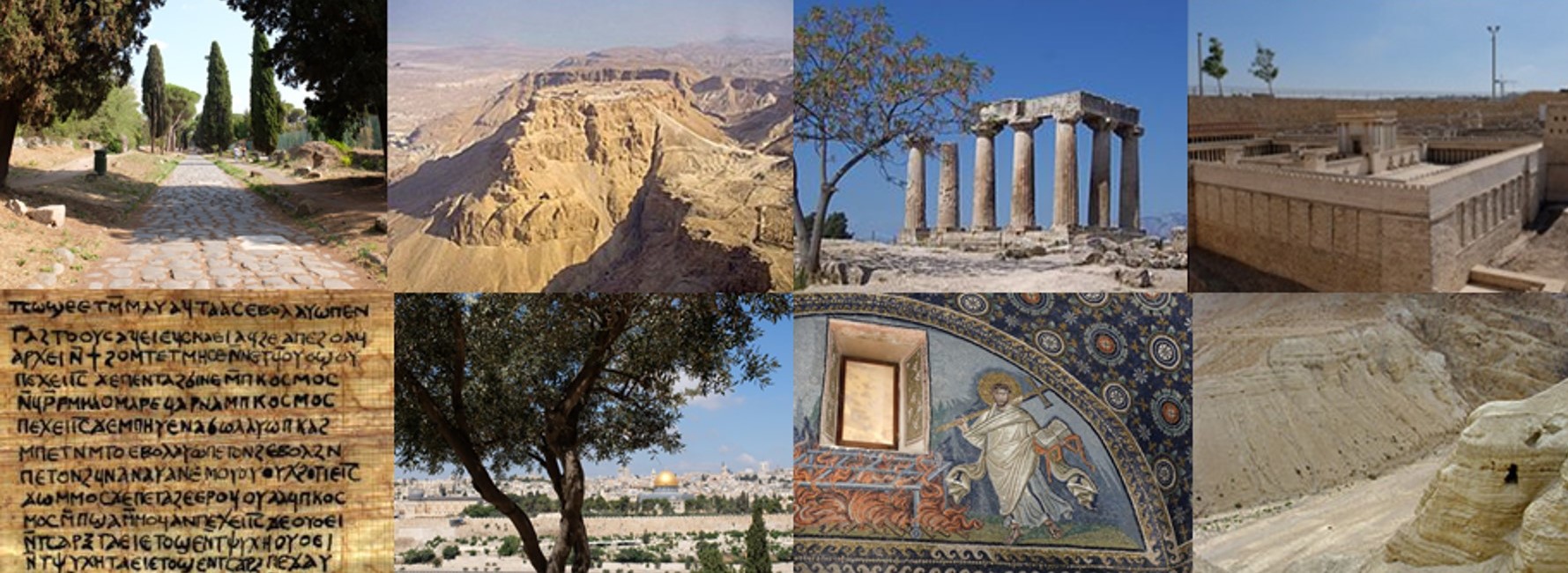Hebrews Chairs: Loveday Alexander and David Moffitt
Session One Hebrews and Biblical Interpretation
Owen Edwards, University of Chester, ‘Allegory in Hebrews and its Christian Contemporaries’
When investigating the use of the Hebrew Bible by the author of Hebrews, the reader may find some passages—most famously Heb 7:1-3—hard to fit into traditional categories of interpretive move. This paper will seek to place these in the context of roughly contemporary Christian writers (the near-contemporary or slightly earlier Paul and the slightly later Epistle of Barnabas), and examine them all in relationship to wider Hellenistic modes of rhetoric—particularly that which the ancient world called ‘allegory’.
Considering relevant passages—the use of the Psalms and Genesis 14 in Hebrews, Paul’s activity in Gal 4:21-31, 1 Cor 9:8-10 and 10:1-4, and elsewhere, and much of the substance of Pseudo-Barnabas—this paper will demonstrate that these interpretive moves, whether ones involving messianic fulfilment (‘typology’), numerology, substitutionary allegory, or other techniques, all significantly stem from the same rhetorical understanding of the Scriptures. This wider context of early Christian interpretive practice will enable us to engage better with the bold and evocative theological activity of Hebrews by understanding one of the letter’s wellsprings, the interpretation of the Hebrew Bible.
Seth Whitaker, University of St Andrews, Psalms and Eschatology in Hebrews and Early Jewish Literature’
The Psalms frame Hebrews’ initial portrait of Jesus and provide the foundation for eschatological hope of the last days in the first two chapters of the exhortation. Containing similar references to eschatological convictions such as ‘the world/age to come’ (cf. Heb 2:5; 6:5), the early Jewish literature of Midrash and Targum provide correlated interpretations that may be insightful for better understanding early Jewish exegesis. The Midrash concerning Ps 102 (cited in Heb 1:10-12) specifically interprets the prayer of the afflicted as an atoning prayer for ‘a later generation’ (Ps 102:1, 18; cf. Heb. 13:15). And the Targum readings of Ps 22 (cf. Heb 2:12) expand the Hebrew for an addition of ‘Abraham’s seed’ (cf. Heb 2:16) who will worship the LORD and tell of his might, again, to ‘a later generation’ (TgPs 22:31). Through this study, it seems plausible that other Jewish interpretive traditions read the Psalms (particularly the Psalms found in Hebrews 1–2) as particularly relevant for communities in the latter days. In this sense, eschatological hope for several interpretive communities is expressed by a similar appeal to Psalter.
Session Two Issues in Interpreting Hebrews’ Cultic Concepts
Nicholas Moore, University of Durham, ‘Once More unto the Breach: The Sanctuary Veil in Hebrews in Pentateuchal, Apocalyptic, and Synoptic Perspective’
The temple/tabernacle curtain (καταπέτασμα) is mentioned six times in the NT, once in each of the Synoptic Gospels at the veil-tearing during Jesus’ crucifixion, and three times in Hebrews (at 6:19; 9:3; 10:20). A strong case has been made for understanding the Synoptic veil-rending accounts in apocalyptic terms (Daniel Gurtner). In Hebrews scholarship much attention has been given to the difficult phrase τοῦτ᾽ ἔστιν τῆς σαρκὸς αὐτοῦ in Heb 10:20, and also to the background of the veil imagery in an apocalyptic rather than gnostic conceptuality (Otfried Hofius responding to Ernst Käsemann). Less attention has been given to other key passages within Hebrews, to the connection between Hebrews and the Septuagint (especially Pentateuch) material on the veil, or to the relationship between Hebrews and the Synoptics. This paper will establish the importance of broadening our scope within Hebrews to include two passages where the curtain is strikingly absent (4:14-16 and 9:6-14), and on this basis will argue two further points: (1) Textually Hebrews depends in large part on the LXX, with influence from Second Temple apocalyptic traditions. (2) While there is little intertextual connection between Hebrews and the Synoptics, they display considerable conceptual overlap. Both construe heaven as an open sanctuary as a result of the Christ event, although with significant differences in the manner, timing, and agency of the breaching of the veil.
David Moffitt, University of St Andrews, ‘Jesus’ Sacrifice and the Mosaic Logic of Hebrews’ New Covenant Theology’
Many assume that the Epistle to the Hebrews marks a definitive break in the development of early Christianity away from its Jewish roots. Perhaps no element of the text points in this direction as much as the author’s apparent repudiation of Jewish sacrifice. The logic, priesthood and sacrifice of the Mosaic covenant seem to be overthrown and replaced by something decisive and new in Jesus. The common conflation of Jesus’ death with his sacrifice is the lynchpin of this reading. Such an account, however, does not accurately perceive the covenantal logic of Hebrews’ argument. In this paper, I argue that Hebrews’ conception of the new covenant presumes numerous analogies with the priesthood, sacrifices and sacred space of the Mosaic covenant. The new covenant in Hebrews is obviously understood by the author to be superior to that of Moses. The basic conception and mechanics of that covenant are not, however, set over against those of the Mosaic covenant. Rather, the new covenant in Hebrews works by analogy to the old not only in terms of recognizing a key event of covenant inauguration, but also in seeing the need to have a mechanism for the ongoing maintenance of that covenant relationship. This covenantal perspective explains why Hebrews links Jesus’ death with the liberation of God’s people from the Devil and Jesus’ ascension with his ongoing high-priestly work in the heavenly sanctuary.

